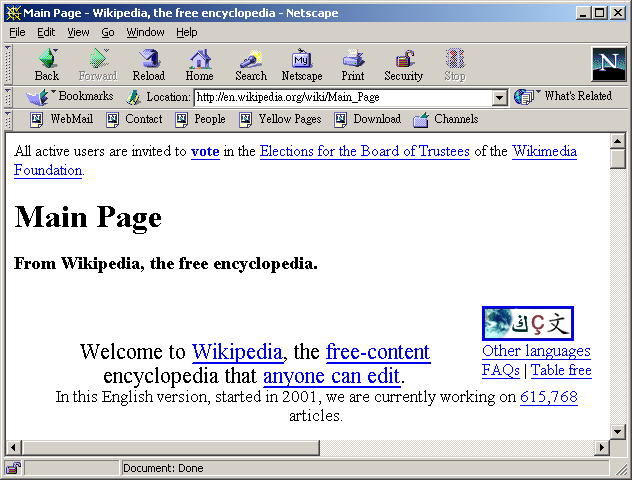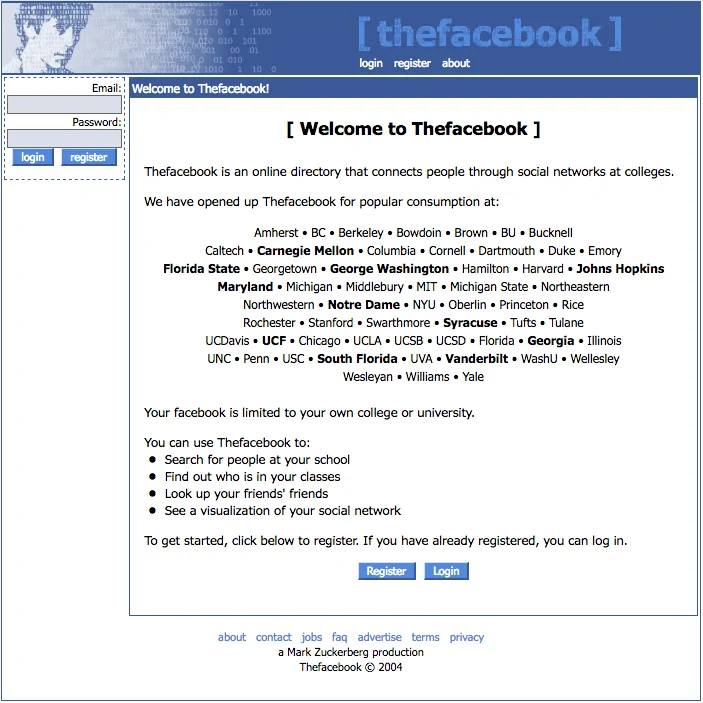If you read anything about cryptocurrencies, NFTs, or the metaverse, you’ll run into the hazy term “Web3.” Web 3 was first coined by the co-founder of Ethereum, Gavin Wood. But what is it exactly?
There are many people that still don’t understand what Web3 is. They even confuse the term with other technologies. So, let’s clear everything up right now. In this article, I will explain the simplest Web3 concept and its role in other related technologies. Then, you’ll have some good knowledge to take part in the new digital economy.
An Introduction to The Web
The internet has changed dramatically over the past few decades. The World Wide Web, as people know it today, is very different from the “internet” of yesteryear. Users no longer access websites through simple HTML pages with links and images. Instead, they log into apps hosted on servers and use secure connections to access websites via HTTPS protocols.
Before we get deep into Web3 and how it affects future technology, let’s learn about its predecessors. We broke the following intro into three sections:
Each version of the web is significant in its own way, leaving a permanent impact on the modern version of the internet.
What is Web1?

Web1 consisted of web pages connected by hyperlinks, lacking the modern-day extra images, controls, and forms. It was a “read-only” web. Meaning users are passive consumers of the internet. They can’t add feedback or communicate with each other.
Webpages were often composed of static pages stored on web servers managed by an internet service provider (ISP) or free web hosting services.
In the Web1 era, most users browse the internet to read about or get updates on various topics, not interact.
What is Web2?

Starting in 2004, Web2 was characterized by increased internet adoption, more online users, and the rise of social networks.
Web2’s read-write-execute process enables users to communicate with one another through the internet. Not only that, but users can also easily access, create, and share massive volumes of data in one single click. As a read-write-execute example, you can take on how people make, browse, and share content on social platforms.
The problem that concerns people about Web2 is centralization. This centralized system gives the data holders privilege to change or modify the data as they see fit.
Most centralized systems have already suffered the harmful effects of being a single point of failure. In fact, the centralized web has been marred by several data breaches that have put the personal information of millions of users at risk.
What is Web3?

As people became more concerned with how “Big Tech” companies seem to monopolize their data owning, the idea of Web3 started rising. Web3 (sometimes referred to as Web 3.0) is a concept of the World Wide Web that integrates ideas like blockchain technology, the metaverse, decentralization, and a token-based economy.
Web3 uses blockchain technology to create a more efficient, secure, and decentralized system. The blockchain is a decentralized record of all transactions on a computer network worldwide. This record is transparent, unchangeable, and accessible by anyone with an internet connection.
Artificial intelligence (AI) and the semantic web are Web 3.0’s two pillars. By helping the computer learn what the data means, the semantic web will enable AI to create practical use cases to better use the data. Hence, AI can differentiate between reliable and unreliable data and provide accurate information.
Experts believe that Web3 will increase user data security, anonymity, and scalability while reducing the influence of significant technology companies. At the same time, several people are also concerned about the decentralized web component of Web3, pointing to the potential for substandard moderation and the distribution of harmful information.
Web 3 Pros and Cons
To summarize, I created each of the pros and cons of Web3 in the next section.
Web3 Pros
- More Privacy.
- Better safety inspections.
- Transparency for users with data ownership rights.
- More relevant search results.
- Personalized internet experience.
- Secure data storage.
- Reduced market power of the big players.
Web3 Cons
- Expensive to set up.
- Loss of control over data.
- Fake content engagement propagation.
- Job losses due to Aautomation with AI/ML technology integration.
Web3 and Blockchain: How Are They Related?
The launch of Bitcoin was a turning point for the creation of Web3 architecture. However, because of their similar traits, some people even confuse blockchain and web3 as the same thing. Well, to know how they’re related, let’s first understand how they are different.
What is blockchain technology?
In simple terms, blockchain is a data storage mechanism that makes it difficult or impossible to change, hack, or bypass the system. The Bitcoin blockchain and other protocols made it impossible for hackers to access data without breaking into various security layers worldwide.
Suggested reading: What is the Bitcoin (BTC) Blockchain?
How blockchain helps web3
The blockchain is the underlying technology powering decentralized apps, providing a decentralized public ledger that records all transactions. This is possible because the blockchain network is decentralized and has no central authority.
Miners secure the blockchain network by validating transactions. In exchange for their service, these miners will earn tokens or rewards. They can also earn greater amounts of tokens by solving difficult computational puzzles, which incentivizes them to maintain the integrity of the network.
In simpler words, blockchain offers a unique set of data or a generic state layer that is controlled by a team. This layer state also makes copy-protected file transfer possible, allowing effective P2P transactions without middlemen.
Hence, blockchain itself is not Web3. But Web3 involves several features that blockchain technology enhances (e.g.g decentralized apps, transparency, secure data storage, etc).
The Web3 Metaverse: What role does it play?
The metaverse is an open platform where people can engage, transact, and communicate virtually. This means that users can create and monetize their avatars, purchase land, trade digital assets and explore locations with other users.
The metaverse is an alternate universe that’s virtually identical to our own, with one significant difference: it exists as a series of decentralized ledgers on the blockchain instead of physical locations.
The Metaverse is part of Web 3.0 – a new generation of the internet that’s safer and more user-friendly than previous versions. It’s also referred to as the decentralized internet because it runs on peer-to-peer networks, and no central servers are needed to access it.
What role will the Metaverse play in Web3?
There is no doubt that the metaverse will play a major role in Web3. As we move towards a more connected and immersive web experience, the metaverse will provide the platform for users to interact with each other and with digital content in a three-dimensional space. The metaverse will also enable new applications and services that are not possible on the current web.
Some of the most likely applications include online gaming, virtual shopping, virtual worlds, social networking, and education. The metaverse will also enable new forms of commerce and communication in Web3. Web 3.0 isn’t just an exciting development for the blockchain and the Metaverse, it’s also a game-changer for businesses across the globe. Large corporations that rely on centralized servers, such as banks and insurance companies, will be forced to adapt.
In fact, they’ll need to update their systems in order to meet compliance requirements and ensure they’re not vulnerable to cyber-attacks. This presents a massive opportunity for blockchain technology like the Metaverse and is a major factor that’s set to drive adoption and growth in the coming years.
The hyper-real metaverse will make it feasible to interact with virtual worlds in new ways for both work and leisure. This can only happen safely if there is a fundamental shift in how data is shared and protected online.
What Is a Web3 Wallet?
The simplest definition of a web3 wallet is a digital wallet that you may use to hold digital assets, such as NFT or fungible. It is an instrument for gaining access to the web3 economy and engaging with Decentralized Applications (Dapps). You may also hear the term “crypto wallet,” which refers to the same thing as a web3 wallet.
Unlike the digital wallet we use today, the Web3 wallet owner can keep digital assets without the help of a third party – if they choose to manage an independent Web3 wallet, a user keeps their seed phrase or private key. This enhances the authentication process for email and basic password logins. Despite the anonymity provided by Web3 wallets, users can publicly link a wallet to their identity through some third-party Web3 wallets.
Additionally, since there is no requirement for a third party, wallet owners can protect their privacy and anonymity online. Moreover, many Web3 wallets don’t require to Know Your Client (KYC) and Anti Money Laundering (AML) process.
But the consequence is that the wallet security burden lies on its owner. For that reason, some Web3 users are starting to turn to hybrid Web3 wallets that offer the best of both worlds: interacting with Web3 dapps and traditional banking security.
What is the best Web3 wallet?
Currently, YouHodler is building a powerful and user-friendly wallet for clients to use in Web3. Traditional banking services, decentralized finance services, payments, trading, and more will soon be availalbe from one, convenient wallet. YouHodler believes Web3 finance will be a fusion of Traditional Finance (TradFi) with the newer, crypto finance platforms.
We outlined our plans for joining Web3 this year and next year in a blog article coming out soon. So stay tuned for it!
Conclusion: What is web3?
To summarize, Web3 is:
– The next evolutionary stage of the internet.
– More private, decentralized and secure than Web2.
– Based on read-write-own compared to Web2’s read-write.
– More functional than Web2.
– Inclusive of machine learning and virtual reality.
– Reliant on blockchain technology for transparency and privacy.
– Heavily encrypted.
– Potentially based in the metaverse.
Many say the transition from Web2 to Web3 is so subtle, that we won’t even notice it’s happening. However, you can still prepare to take advantage of certain opportunities. With cryptocurrency and blockchain set to play a major role in Web3, it’s never too early to start getting involved.
YouHodler has several tools to help you participate in the new digital economy. Head on over to our site today and see what we can do for you.











